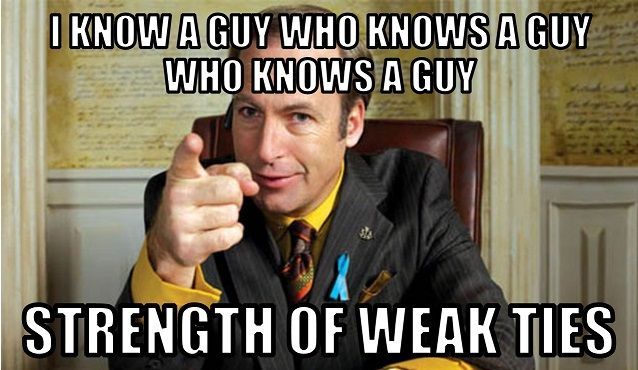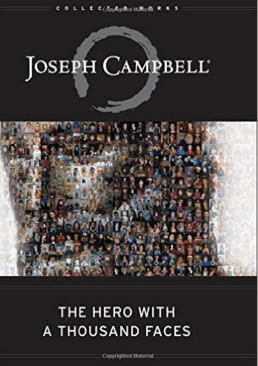
Stories are not only great for bedtime and parties, but they’re also great for business.
Why?
Because a great story persuades people to take action.
According to an article by Yesware, the persuasive force of stories has been well documented.
A series of experiments performed by neuroeconomics pioneer Paul Zak found that stories that are highly engaging and contain key elements — including a climax and denouement – can elicit powerful empathic responses by triggering the release of Oxytocin.
Often referred to as the “trust hormone,” this neurochemical promotes connection and encourages people to feel empathy.
When released in the brain of your prospect it can help to build trust in your brand or product, and in doing so increase sales.
Which is what you want, right?
However, stories that do not have a clearly defined beginning, middle, and end do not engage our brains in the same way.
In this post, I’ll show you exactly how to structure and craft your story (or your customer’s story) in a way that will persuade people to take the action you desire.
Here’s a preview of the story we’ll create today:
The Strength of Weak Ties
This format we’re going to use is based on an article Nicholas Reese wrote on how persuasive storytelling can leverage the strength of weak ties.
What does the strength of weak ties mean? It means the people in your life whom you are the least connected with offer you the most opportunities.

For business owners, this means that the most important people in your business are people you probably haven’t met yet – like your customers.
So how do you get people to start talking about you so you can get in front of those who are least connected to you?
Storytelling.
We’ll break down Nicholas’ post and show you how you can create a story of your own AND be inspired by successful people who have done the same for their business.

The strategy is simple but extremely effective and is based on the book The Hero With A Thousand Faces by Joseph Campbell.
It’s the same framework that successful moviemakers have used to create blockbusters. Movies such as:
- Star Wars
- The Matrix
- Harry Potter
- The Lord of the Rings
Nicholas outlines the following steps to use to create your own personal story:
- Identity – Who you were when you started your journey?
- Turn Against the Status Quo (TASQ) – What did you want to change about your prior identity / world?
- Struggle – What did you struggle against as you started to create change?
- Insight – What unique tool or insight did you gain that made overcoming this challenge easier?
- Resolution – Who are you today and who do you serve?
The format works especially well if you are a coach, consultant, author, speaker, or somebody who is involved in a business where you primarily sell and package your advice or insights.
If your business serves others in a more technical way or if you sell a product, you can use the exact same format — just tweak the formula to focus on the success of one of your clients or users.
We’ll walk through each step in just a moment but first, let’s set some guidelines to use when crafting your story:
- Your story must be true. (unless you are writing an example)
- You should include pictures as often as possible
- If you can, use video because it makes it much more believable (especially if you are telling a client story)
- Make sure the TASQ/unique insight is something your audience has experienced and sees the benefit to solving
- This type of story is perfect for including on your About page and in your sales material
Keeping that in mind, let’s expand on the five steps to creating your personal story.
How to Craft a Story That Sells
Step 1) Identity
The first step in creating a powerful and persuasive story is to reflect back on who you were when you started this journey.
The key here is to look at yourself and your relationship to the world at this time.
Things to keep in mind as you develop your identity is to consider your personality traits, do an assessment of your skills and abilities at the time, your occupation and hobbies, and even awareness of your physical attributes.
For example, the statement, “I am lazy” or “I am out of shape” is a self-assessment that contributes to self-identity. In contrast, the statement “I am tired” would not normally be considered part of your self-identity, since being tired is a temporary state.
Consider talking about your age, what you were doing at the time and your view of world and why you wanted to change or embark on this journey.
Talk about the ideas you had regarding what you might become, what you would like to become, and what you’re afraid of becoming.
These ideas should correspond to your hopes, fears, standards, goals, and threats. They can also function the incentives for becoming your future self (the person you are today).
For example, let’s say you are a fitness instructor who operates a popular online blog.
Your identity as it relates to your journey to success could be the following:
I was 34 years old, lazy and overweight. My confidence and self-esteem were in the gutter and I rarely left the house (despite all of the repeated invitations from my friends). In high school, I was a pretty good athlete and ran track. But since graduating college and getting married, I let my health deteriorate to a level where I was considered obese.”
Step 2) Turn Against the Status Quo
Deep inside us, we have a longing to be a better version of ourselves. A vision of our future self.
Remember Maslow’s hierarchy of needs that eventually leads to self-actualization?
As described by Maslow himself, self-actualization is a motive to realize one’s full potential…by expressing one’s creativity, a quest for spiritual enlightenment, the pursuit of knowledge, and the desire to give to society.
Thinking back to your identity at the time, what did you want to change with regard to your current state of affairs? What motivation did you have to realize your full potential, to get where you are today?
Maybe you were stuck in a dead-end job or were broke and living in your parent’s basement. Whatever the situation was, there was something about it that you didn’t enjoy and thus precipitated the change.
Keeping with the same example from above:
As the years went by, my weight increased along with my cholesterol and blood pressure. I knew that if I did not change my current lifestyle, I may not live to see my children graduate high school. The thought of this repulsed me and sparked my desire to be a healthy human being…again.”
Step 3) The Struggle
Every hero’s journey has a struggle. Neo from the movie The Matrix was given the task of learning how to manipulate the Matrix and confront agents who are super-powerful computer programs devoted to snuffing out Neo and the entire human rebellion.
 What was your struggle as you embarked on this journey that led you where you are today?
What was your struggle as you embarked on this journey that led you where you are today?
Maybe you applied for multiple jobs to get you out of the dead-end job you were in but just couldn’t land a gig.
Whatever your struggle was, the key is to make sure this is a unique insight and something that your audience has experienced and sees the benefit to solving.
So I did what I thought was the best thing for me to do — join a gym. But despite the gym being open 24hrs/day, I only went a few times a month. I had no one to show me which exercises would work best for me nor did I have any clue about eating a proper diet while exercising. Needless to say, this sent me further into a depressed state.”
Step 4) Insight
So often in our lives, when we are faced with a challenge, we have an insight or found a resource or tool that helps us overcome our obstacle to becoming our future selves.
Personal obstacles are related to our psychology, behaviors, and state-of-mind. They can include limiting habits, debilitating emotions, fears, and beliefs.
These obstacles prevent us from moving forward towards the attainment of our goals and objectives because of the thoughts that we tend to dwell upon every day.
These thoughts naturally prevent us from making effective decisions and undertaking the actions that will help us create the momentum we need to get to our end destination – realizing our full potential (as in the above example).
When reflecting back on the obstacle you were overcoming to be where you are today, some of the most common you may have encountered are:
- Lack of discipline
- Lack of knowledge
- Lack of inspiration
- Lack of desire
- Lack of skill
- Fear of change
- Fear of failure
- Feeling unworthy
- Procrastination
- Perfectionism
- Disorganization
- Pessimistic thoughts
- Too many time constraints
- Too much complacency
- Too much blaming of self and others
- Too many excuses
- Too much complaining
Admittedly, some of these are all too familiar to me 🙂
And it’s okay to have these kinds of obstacles that prevent you from achieving your goals. Remember, we’re human, no one is perfect.
But, somewhere along the way, you figured it out.
You identified the obstacles and came up with a plan to overcome them.
What was it?
Was there an insight that you discovered that helped you succeed? Did you hire a mentor? Go back to school to acquire new skills and knowledge?
Whatever it is, this is the part where you talk about how you triumphed and set off on your journey to success.
Talk about the obstacles. If you were pessimistic or disorganized, let your audience know. Doing this makes you relatable. Overcoming them makes you inspirational.
And this is what will draw customers to you…your ability to overcome your struggle with the status quo.
Staying with our example, one can infer that this person had a few obstacles to overcome (ex: lack of discipline, knowledge or inspiration).
But this person overcame them by doing the following:
It took me nearly fours months to realize that I had no clue how to get my butt back in shape. I had read so many blogs and watched so many videos that I didn’t know which step was the first step I needed to take. Reluctantly, I walked up to the personal trainer counter at the gym and simply said “I need help”. The fit, young girl smiled and said “I’d be happy to help you! What do you need help with?”
“Everything”, I replied.
We talked about my goals and how I’d been struggling to get any momentum going. She took notes and told me to come back the next day. When I did, she had created a complete workout program for me along with a daily diet. She cautioned me that while having a plan is great, it’s up to the individual to put the work in and execute it.
I nodded my head and off we went to the treadmill.Over the course of the next three months, I went to the gym five days a week and followed the diet she had laid out for me.
I’m proud to say that I’ve already lost 50 pounds, my energy is up and I’ve got an optimistic view of the future.”
Step 5) Resolution
With the hard work out of the way and the obstacles behind you, the final step in writing your journey to success is to talk about who you are today and who you serve.
Let’s wrap up our example:
While the workout program and diet successfully helped me become healthy again, I read nutrition books and tinkered with variations of the exercises that led to even better results – weight loss and adding lean muscle.
This led me to create my own proprietary nutrition and workout program that helps people who are obese, depressed and have no idea how to get on the path to living a healthy lifestyle.
People who are in the same situation I was in five years ago.”
This is the top of Maslow’s hierarchy of needs: self-actualization. The person in our example created a better version of themselves and became their “future self”.
The conclusion to your story should do the same and ideally, your resolution would align with the advice or insights you provide to your customer – if it’s consulting or paid services you offer.
A resolution like this can be especially useful for an author who has written a book on his or her journey to success and is now showing others how they can follow his exact steps to have the same outcome.
Remember, if it’s a product you sell, this is where you capitalize on the positive results one of your customers had.
Conclusion
Storytelling is one of the most powerful ways to get people to do business with you – if you know how to properly structure the story.
By telling a compelling story of your own, or of your customers, you immediately become relatable, and to an extent, trustworthy.
It helps your story get out to those you have a “weak tie” with and are also the source of your strongest opportunities.
In the process, you also create a tribe that will follow you wherever you go.
Use this story whenever you can in places like:
- About page on your website
- Sales material
- Conferences or conventions
- Presentations and speeches
Have a story you’re willing to share with the community? Put it in the comments below along with a link to your website. We would love to read them and check out your website in the process!
Real world examples
Pat Flynn of Smart Passive Income
Nick Vujicic of Life Without Limbs
Felena Hansonof Hera Hub
7 Entrepreneurs Who Beat the Odds

